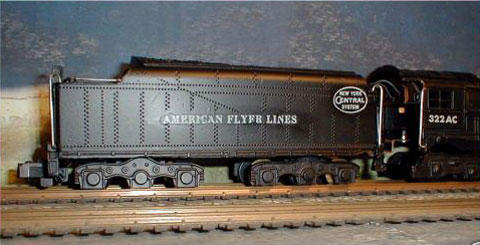Good evening guys, my next door neighbor brought me over the other night to look at some trains that a guy was thinking about selling. They were his Uncle's trains and he has no interest in them what-so-ever. He was asking me if I could maybe give him some kind of value or what I thought they would be worth. Tucked away in a briefcase, was a 4-6-4 #322 which seems to be in fair condition. It is however, missing a wheel set on the tender. I've never seen one of these, don't have any idea if it runs or not. Would some of you that are very knowledgeable about the AF line of trains, can you give me some kind of an idea as to what it might be worth and maybe a little background as to when it might possibly have been made or when it came out. There was also an Audio Engineer in the box with it. Have no clue what that is or how it works.
Any help you all can give me will be most appreciated. You can contact me direct if you like, sptrainnut@att.net, just make sure you mention AF 322 in the subject line. I can supply photos if necessary.
Thanks for your help, it is greatly appreciated.
J. Motts














